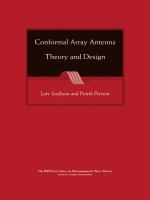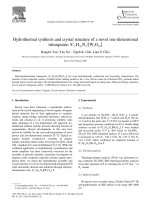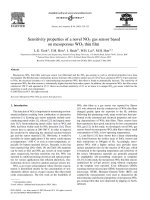A novel reconfigurable array antenna using metamaterial structure
Bạn đang xem bản rút gọn của tài liệu. Xem và tải ngay bản đầy đủ của tài liệu tại đây (1.1 MB, 6 trang )
������������������������������������������������������������������������������������������������������������������������������������������������������������������������������������������������������������������������������������������������������������������������������������������������������������������������������������������������������������������������������������������������������������������������������������������������������������������������������������������������������������������������������������������������������������������������������������������������������������������������������������������������������������������������������������������������������������������������������������������������������������������������������������������������������������������������������������������������������������������������������������������������������������������������������������������������������������������������������������������������������������������������������������������������������������������������������������������������������������������������������������������������������������������������������������������������������������������������������������������������������������������������������������������������������������������������������������������������������������������������������������������������������������������������������������������������������������������������������������������������������������������������������������������������������������������������������������������������������������������������������������������������������������������������������������������������������������������������������������������������������������������������������������������������������������������������������������������������������������������������������������������������������������������������������������������������������������������������������������������������������������������������������������������������������������������������������������������������������������������������������������������������������������������������������������������������������������������������������������������������������������������������������������������������������������������������������������������������������������������������������������������������������������������������������������������������������������������������������������������������������������������������������������������������������������������������������������������������������������������������������������������������������������������������������������������������������������������������������������������������������������������������������������������������������������������������������������������������������������������������������������������������������������������������������������������������������������������������������������������������������������������������������������������������������������������������������������������������������������������������������������������������������������������������������������������������������������������������������������������������������������������������������������������������������������������������������������������������������������������������������������������������������������������������������������������������������������������������������������������������������������������������������������������������������������������������������������������������������������������������������������������������������������������������������������������������������������������������������������������������������������������������������������������������������������������������������������������������������������������������������������������������������������������������������������������������������������������������������������������������������������������������������������������������������������������������������������������������������������������������������������������������������������������������������������������������������������������������������������������������������������������������������������������������������������������������������������������������������������������������������������������������������������������������������������������������������������������������������������������������������������������������������������������������������������������������������������������������������������������������������������������������������������������������������������������������������������������������������������������������������������������������������������������������������������������������������������������������������������������������������������������������������������������������������������������������������������������������������������������������������������������������������������������������������������������������������������������������������������������������������������������������������������������������������������������������������������������������������������������������������������������������������������������������������������������������������������������������������������������������������������������������������������������������������������������������������������������������������������������������������������������������������������������������������������������������������������������������������������������������������������������������������������������������������������������������������������������������������������������������������������������������������������������������������������������������������������������������������������������������������������������������������������������������������������������������������������������������������������������������������������������������������������������������������������������������������������������������������������������������������������������������������������������������������������������������������������������������������������������������������������������������������������������������������������������������������������������������������������������������������������������������������������������������������������������������������������������������������������������������������������������������������������������������������������������������������������������������������������������������������������������������������������������������������������������������������������������������������������������������������������������������������������������������������������������������������������������������������������������������������������������������������������������������������������������������������������������������������������������������������������������������������������������������������������������������������������������������������������������������������������������������������������������������������������������������������������������������������������������������������������������������������������������������������������������������������������������������������������������������������������������������������������������������������������������������������������������������������������������������������������������������������������������������������������������������������������������������������������������������������������������������������������������������������������������������������������������������������������������������������������������������������������������������������������������������������������������������������������������������������������������������������������������������������������������������������������������������������������������������������������������������������������������������������������������������������������������������������������������������������������������������������������������������������������������������������������������������������������������������������������������������������������������������������������������������������������������������������������������������������������������������������������������������������������������������������������������������������������������������������������������������������������������������������������������������������������������������������������������������������������������������������������������������������������������������������������������������������������������������������������������������������������������������������������������������������������������������������������������������������������������������������������������������������������������������������������������������������������������������������������������������������������������������������������������������������������������������������������������������������������������������������������������������������������������������������������������������������������������������������������������������������������������������������������������������������������������������������������������������������������������������������������������������������������������������������������������������������������������������������������������������������������������������������������������������������������������������������������������������������������������������������������������������������������������������������������������������������������������������������������������������������������������������������������������������������������������������������������������������������������������������������������������������������������������������������������������������������������������������������������������������������������������������������������������������������������������������������������������������������������������������������������������������������������������������������������������������������������������������������������������������������������������������������������������������������������������������������������������������������������������������������������������������������������������������������������������������������������������������������������������������������������������������������������������������������������������������������������������������������������������������������������������������������������������������������������������������������������������������������������������������������������������������������������������������������������������������������������������������������������������������������������������������������������������������������������������������������������������������������������������������������������������������������������������������������������������������������������������������������������������������������������������������������������������������������������������������������������������������������������������������������������������������������������������������������������������������������������������������������������������������������������������������������������������������������������������������������������������������������������������������������������������������������������������������������������������������������������������������������������������������������������������������������������������������������������������������������������������������������������������������������������������������������������������������������������������������������������������������������������������������������������������������������������������������������������������������������������������������������������������������������������������������������������������������������������������������������������������������������������������������������������������������������������������������������������������������������������������������������������������������������������������������������������������������������������������������������������������������������������������������������������������������������������������������������������������������������������������������������������������������������������������������������������������������������������������������������������������������������������������������������������������������������������������������������������������������������������������������������������������������������������������������ parameters in FR4 is very
low while the parameters of substrate significantly
affect to the parameters of antenna. Therefore, this is
also one of reasons for the above difference.
However, the bandwidth still covers from about 6.6
GHz to 8 GHz and from 9 GHz to greater than 10
GHz and these bandwidths are enough for
applications in C and X bands.
a)
b)
Fig. 9. The fabricated antenna: array antenna and
ground plane (a) and MRS and antenna’s model (b)
Compared to some published papers, we can see
as follow. In [18], although the antenna includes 16
elements and is designed at central frequency of 11
GHz, the gain of antenna is only 8.1 dB. In another
study, an array antenna is designed at frequency of 10
GHz including 16 elements, but the bandwidth
percentage is only 5% [19]. Similarly, even when the
antenna including 256 elements is designed at
frequency of 60 GHz, but the bandwidth percentage
of antenna is only 6.5% [20]. It is clear that with the
above parameters, the antennas can not satisfy for
current
applications.
Therefore,
by
using
metamaterial and MRS, not only the bandwidth of
antenna is improved, but also the gain is enhanced.
a)
4. Conclusions
In this paper, we have designed, simulated and
fabricated a frequency reconfigurable antenna array
of 4x3 elements. By using metamaterial structure on
ground plane and MRS, the proposed antenna’s gain
and bandwidth is improved. The key limitations of
microstrip antenna, that are gain and bandwidth
which are improved significantly. The antenna’s gain
is 7 dB and 11 dB at center frequencies of 6.75 GHz
and 9.3 GHz, respectively. The bandwidth of antenna
covers from approximately 6.6 GHz to about 8 GHz
and from 9 GHz to greater than 10 GHz, so this
bandwidth is enough for broadband applications.
b)
Fig. 10. The simulation and measurement results at
frequencies of 6.75 GHz (a) and 9.3 GHz (b)
3.2 Measurement results
The antenna is fabricated on FR-4. The photo
for fabricated antenna is shown in Fig. 9. Fig. 9(a)
presents array antenna and ground plane with
metamaterial structure while Fig. 9(b) shows MRS
and antenna’s model. The antenna is measured by
Anritsu 37369D Vector Network Analyzer at
30
Journal of Science & Technology 123 (2017) 026-031
With advantages such lightweight, small size,
low cost and easy fabrication, microstrip antenna can
widely apply in practice.
Based
on
Composite
Right/Left-Handed
Transmission Line,” IEEE Antennas Wirel. Propag.
Lett., vol. 9, pp. 36–39, 2010.
[12]. R. O. Ouedraogo, E. J. Rothwell, A. R. Diaz, K.
Fuchi, and A. Temme, “Miniaturization of Patch
Antennas Using a Metamaterial-Inspired Technique,”
IEEE Trans. Antennas Propag., vol. 60, no. 5, pp.
2175–2182, May 2012.
References
[1]. D. H. Schaubert, F. G. Farrar, S. T. Hayes, and A. R.
Sindoris, “Frequency-agile, polarization diverse
microstrip antennas and frequency scanned arrays,”
Google Patents, 1983.
[13]. M. A. Antoniades and G. V. Eleftheriades,
“Multiband Compact Printed Dipole Antennas Using
NRI-TL Metamaterial Loading,” IEEE Trans.
Antennas Propag., vol. 60, no. 12, pp. 5613–5626,
Dec. 2012.
[2]. B. A. Cetiner, G. R. Crusats, L. Jofre, and N. Biyikli,
“RF MEMS Integrated Frequency Reconfigurable
Annular Slot Antenna,” IEEE Trans. Antennas
Propag., vol. 58, no. 3, pp. 626–632, Mar. 2010.
[14]. T. Alam, M. R. Faruque, M. T. Islam, and others,
“Specific absorption rate reduction of multi-standard
mobile antenna with double-negative metamaterial,”
Electron. Lett., vol. 51, no. 13, pp. 970–971, 2015.
[3]. Pei-Yuan Qin, A. R. Weily, Y. J. Guo, T. S. Bird, and
Chang-Hong Liang, “Frequency Reconfigurable
Quasi-Yagi Folded Dipole Antenna,” IEEE Trans.
Antennas Propag., vol. 58, no. 8, pp. 2742–2747,
Aug. 2010.
[15]. I. B. Bonev, S. C. D. Barrio, O. Franek, and G. F.
Pedersen, “A modified metamaterial inspired antenna
solution for reduction of the Specific Absorption Rate
in the head,” International Conference on
Electromagnetics
in
Advanced
Applications
(ICEAA), 2011, pp. 769–772.
[4]. M. N. M. Kehn, O. Quevedo-Teruel, and E. RajoIglesias, “Reconfigurable Loaded Planar Inverted-F
Antenna Using Varactor Diodes,” IEEE Antennas
Wirel. Propag. Lett., vol. 10, pp. 466–468, 2011.
[5]. F. Farzami, K. Forooraghi, and M. Norooziarab,
“Miniaturization of a Microstrip Antenna Using a
Compact and Thin Magneto-Dielectric Substrate,”
IEEE Antennas Wirel. Propag. Lett., vol. 10, pp.
1540–1542, 2011.
[16]. C. A. Balanis, Antenna Theory: Analysis and Design,
3rd edition. Hoboken, NJ: John Wiley, 2005.
[17]. S. Islam, M. Faruque, and M. Islam, “The Design and
Analysis of a Novel Split-H-Shaped Metamaterial for
Multi-Band Microwave Applications,” Materials, vol.
7, no. 7, pp. 4994–5011, Jul. 2014.
[6]. A. M. Abbosh, “Miniaturization of Planar
Ultrawideband Antenna via Corrugation,” IEEE
Antennas Wirel. Propag. Lett., vol. 7, pp. 685–688,
2008.
[18]. S. Islam, M. Faruque, and M. Islam, “The Design and
Analysis of a Novel Split-H-Shaped Metamaterial for
Multi-Band Microwave Applications,” Materials, vol.
7, no. 7, pp. 4994–5011, Jul. 2014.
[7]. B. Ghosh, S. M. Haque, D. Mitra, and S. Ghosh, “A
Loop Loading Technique for the Miniaturization of
Non-Planar and Planar Antennas,” IEEE Trans.
Antennas Propag., vol. 58, no. 6, pp. 2116–2121, Jun.
2010.
[19]. M. Nikfalazar et al., 2016, “Two-Dimensional Beam
Steering Phased Array Antenna With Compact
Tunable Phase Shifter Based on BST Thick-Films,”
IEEE Antennas and Wireless Propagation Letters,
vol. 4003, no. c, pp. 1–1.
[8]. V. G. Veselago, “The electrodynamics of substances
with simultaneously negative values of ɛ and μ,”
Phys.-Uspekhi, vol. 10, no. 4, pp. 509–514, 1968.
[20]. Y. Ushijima, E. Nishiyama, and M. Aikawa, 2012,
“Single layer extensible microstrip array antenna
integrating SPDT switch circuit for linear polarization
switching,” IEEE Transactions on Antennas and
Propagation, vol. 60, no. 11, pp. 5447–5450.
[9]. C. Caloz and T. Itoh, “Electromagnetic
Metamaterials: Transmission line Theory and
Microwave
Applications:
The
Engineering
Approach,” Hoboken, N.J: John Wiley & Sons, 2006.
[21]. D. Kim, M. Zhang, J. Hirokawa, and M. Ando, 2014,
[10]. D. Nashaat, H. Elsadek, E. Abdallah, H. Elhenawy,
M. F. Iskander, and others, “Enhancement of ultrawide bandwidth of microstrip monopole antenna by
using metamaterial structures,” Antennas and
Propagation Society International Symposium, 2009.
APSURSI’09. IEEE, 2009, pp. 1–4.
“Design and Fabrication of a Dual-Polarization
Waveguide Slot Array Antenna With High Isolation
and High Antenna Efficiency for the 60 GHz Band,”
Antennas and Propagation, IEEE Transactions on,
vol. 62, no. 6, pp. 3019–3027.
[11]. Jeong Keun Ji, Gi Ho Kim, and Won Mo Seong,
“Bandwidth Enhancement of Metamaterial Antennas
31









